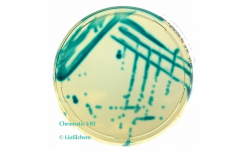
In this guide, we explore some factors to consider when choosing a manual or electronic pipette for microbiological analyses. Requirements for liquid handling in a microbiology lab might be different from other analytical laboratories. Here are some points to consider before committing to purchasing a pipette.
Key Points to Consider When Buying a Pipette for Microbiology Applications
- Volumes - The volumes of liquid to be dispensed might cover a wider range (from, for example, adding larger volumes of culture media right down to microlitre amounts for molecular assays).
- Contamination - Microbiology labs have many sources of contaminants; whether it's bacterial or viral aerosols, the potential is there for cross contamination between samples and equipment. This is especially important when performing sterility or bioburden testing.
- Tips - Sterile pipette tips are available from your pipette manufacturer, plus any other tip formats such as free from endotoxin/PCR assay inhibitors or with filter insert. Wide bores may be needed for pipetting from enrichment broths containing food debris.
- Ease of Use - Pipette should be ergonomically designed and easy to use in the confined space of a laminar flow cabinet.
- Maintenance and Calibration Schedules - Essential for all lab instrumentation
- Sustainability - Nearly all labs are now working towards reducing their plastic waste, discuss how the manufacturer is helping address this issue.
Just a Reminder - What's the Difference Between Accuracy and Precision?
For many applications, pipettes need to be as accurate AND precise as possible, but what’s the difference between accuracy and precision? Accuracy is the measure of how close you are to the target volume whereas precision is how close each measurement is to each other so if you repeated the dispensing several times, how similar are the resulting volumes to each other?

A key factor in accuracy and precision is using the right volume pipette for each step of a protocol in addition to pipetting training. Many manufacturers offer great, free training resources either via video or text-based learning.
Contamination
Whether it's molecular contamination of a PCR test from tip transfer or microbial contamination from the operator, in a GLP environment, your pipette choice should include the ability to take the following steps to minimise the pipette as a source of contamination. These include:
- Before and after use, wipe down the pipette surface with 70% ethanol
- Use pre-sterilized pipette tips
- Store the pipette vertically on a pipette stand
- Follow the manufacturer's advice on cleaning and sterilizing the pipette, it will need to withstand steam sterilization or autoclaving, so check how easy it will be to do this, and are special tools required for dismantling parts? Mechanical pipettes are more easily autoclaved than electronic pipettes. What's the difference between a mechanical and an electronic pipette?
Pipette Tips - Are They All Created Equal? There's a Lot of Choice!
There are many providers of pipette tips including own-brand sellers offering greatly reduced prices, but it's normally best practice for the tips and pipette to be from the same manufacturer, as the specified performance from a manufacturer only relates to their device when used with their tips. The ISO 8655:2002 standard for piston-operated volumetric apparatuses points out that when using pipette tips that have not been supplied by the pipette supplier the supplier’s declaration of conformity does not apply. Before purchasing the pipette check the manufacturer has exactly the right tip formats that you might need, such as:
- Easy fit, 'leakproof' mechanisms
- Filter tips to prevent contamination from sample to pipette
- Pre-sterilized tips - packed and racked in numbers to suit your needs
- Extended tips - to reach the bottom of long tubes without the pipette touching the vessel
- Endotoxin/Pyrogen free if performing a Bacterial Endotoxin Test (BET), LAL or MAT
- PCR inhibitors free - molecular assays need to have tips free from inhibitors such as endonuclease, exonuclease, and RNase.
Ease of Use
As pipettes are the workhorse of the lab, your choice of pipette should increase productivity so it's essential that they are reliable, easy to use, compliant with the lab's ISO requirements and the right tool for the task. Electronic pipettes are more ergonomic, the fastest to use, deliver reproducible results and can be programmed. Get an in-lab demonstration before buying to ensure the instrument has low operating forces for the whole of the pipetting cycle, from tip attachment, pipetting and tip ejection to avoid operator Repetitive Strain Injury (RSI). Some manufacturers have specially designed light tip ejection. If using in a laminar flow cabinet all the volume adjustments and handling tasks will need to be done in the restricted space.
Where do Pipetting Errors Come From?A Sartorius application note* reports the biggest errors for air displacement pipettes comes from the tips:
- 0.5.5 – 50% error from leaking or poorly fitting pipette tips
- Up to 10% error from tip straightness
- Up to 4% error from re-use of tips
Maintenance and Calibration – Most suppliers will offer a service contract for regular calibration, plus they should also supply detailed instructions for daily or weekly maintenance and calibration schedule that are easy to follow by any member of staff. Part of this might be an autoclave step especially if it's being used for microbiological samples. Check how easy it is to autoclave.
Sustainability - How to Reduce Waste?
Driven by market demand pipette tip manufacturers are now working towards reducing the plastic packaging waste that accompanies tips and racks.
Resources:
*Sartorius Application Note: The Role of Pipetting Tips in Achieving the Best Pipetting Performance
Sartorius Guide to Avoiding Contamination in Pipettes
This page is sponsored by Sartorius makers of the Tacta® Mechanical Pipette: a lightweight solution that makes pipetting effortless and safe - while ensuring accurate and reliable results, time after time.
























